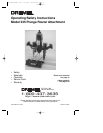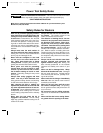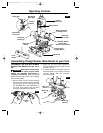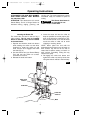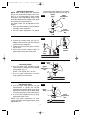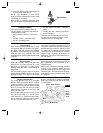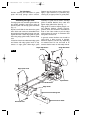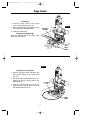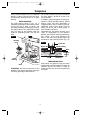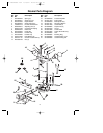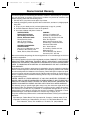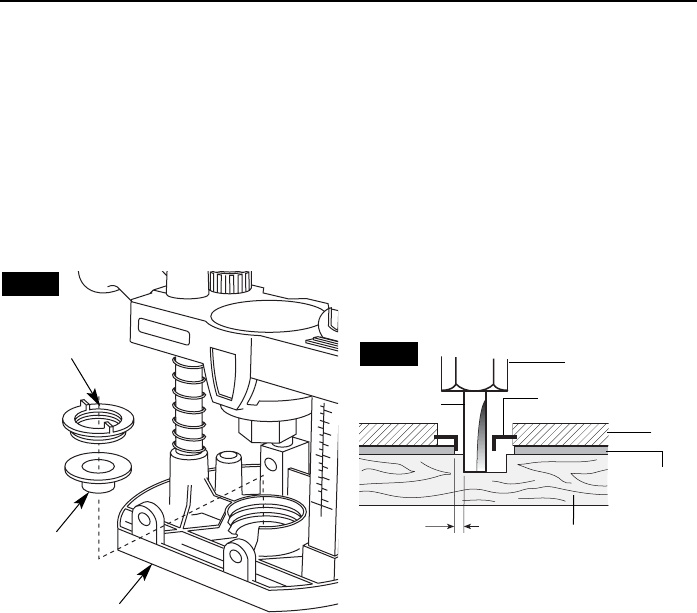
9
Templates
Using template patterns lets you duplicate
designs or letters uniformly time after time.
This technique requires the use of a guide
bushing.
GUIDE BUSHINGS
The guide bushing shown in (Fig. 14), is
essentially a plate with a collar which is insert-
ed into the hole in base as shown, and
secured by threading a bushing plug on top of
the guide bushing. The guide bushing rides
along the edge of the template while the
router bit, protruding below, cuts into the
work.
ATTENTION: Be sure the thickness of the
template is the same or larger than the length
of bushing protruding below the base.
Do not use a bit that may touch the inside of
the collar. Select a bit that is at least 1/16"
less in diameter.
In addition, special templates are easily pre-
pared for cutting repeated patterns, special
designs, inlays, and other applications. A
template pattern may be made of plywood,
hardboard, metal or even plastic, and the
design can be cut with a router, jigsaw, or
other suitable cutting tool.
Remember that the pattern will have to be
made to compensate for the distance
between the router bit and the guide bushing
(the “offset”), as the final workpiece will
differ in size from the template pattern by
that amount, due to the bit position (Fig. 15).
FREEHAND ROUTING
Many effects are gained by using the router
freehand with a small diameter bit. Usually the
craftsman pencils the outline or script he
desires onto the work and uses the pencil line
as a guide.
Collet Nut
Workpiece
Router Bit
Offset
Guide Bushing
Templete
Pattern
FIG. 15
Base
Bushing
Plug
Guide
Bushing
Base
FIG. 14
DM 2610920458 2-04 2/19/04 12:29 PM Page 9



